Content Delivery Network (CDN) & Its Indian Market Overview
Get detailed insights on Content Delivery Network, Its Market, Growth Drivers and Trends
CDN is the acronym for Content Distribution Network or Content Delivery Network. CDNs depict a network of interconnected computers using an active Internet connection containing copies of data placed at multiple points across a network. The content is replaced across multiple points in the network to enhance the data access from clients present all over the Internet.
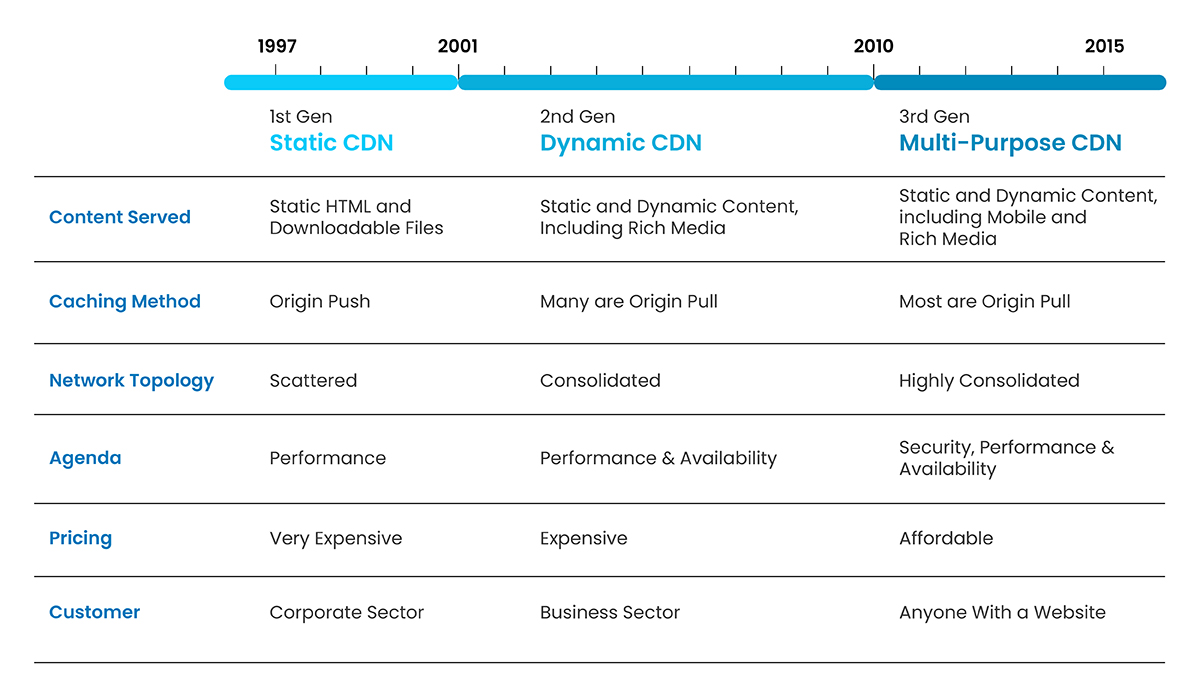
Specialized Internet/Cloud Service Providers offer CDN to deliver static or dynamic content and webpages. In a CDN, the client can replicate the data by accessing the nearest server rather than using the main or central servers to avoid any bottlenecks at the servers’ proximity. With CDN, it becomes easier to provide similar content to a large number of users with the highest efficiency and reliability, even during instances of maximum traffic. Any CDN is designed to virtually reduce the physical distance between the user and web hosting servers, to improve the rendering speed and performance of sites.
Working of CDN
At the core level, CDN comprises a network of servers that are interconnected with the ultimate goal of delivering content quickly, cheaply, reliably, as well as securely. If one wishes to improve the speed and connectivity, the servers must be strategically placed at the exchange points between various networks.
The Internet Exchange Points can be the primary locations where various Internet providers connect for accessing traffic originating across different networks. By establishing connections across these high-speed locations, CDN providers can easily reduce costs and data latency.
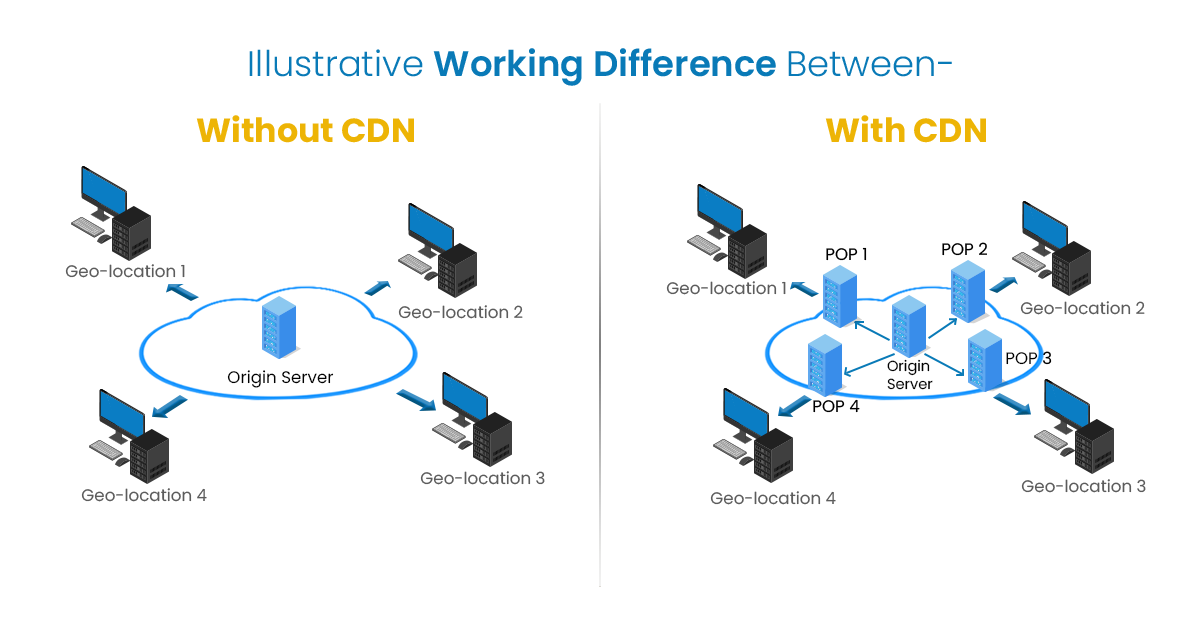
CDN Architecture
Choosing CDN infrastructure architecture is important as it helps shape a product’s product identity and defines its value. For any CDN infrastructure, the basic building block includes the PoPs (Points of Presence), the regional data centers responsible for carrying out communication with users within the proximity region.
Whenever regional content distribution centers are used, they reduce the round-trip time (RTT). Reduce round-trip time results in a faster and responsive website for all types of visitors irrespective of their geographic locations.
Usually, every PoP contains several servers and routers that are responsible for aspects like- caching, optimization of connections and other content delivery associated features. CDNs enhance users’ pre-existing hosting experience by reducing bandwidth consumption, minimizing latency, and offering the required scalability for handling high traffic volume surges.
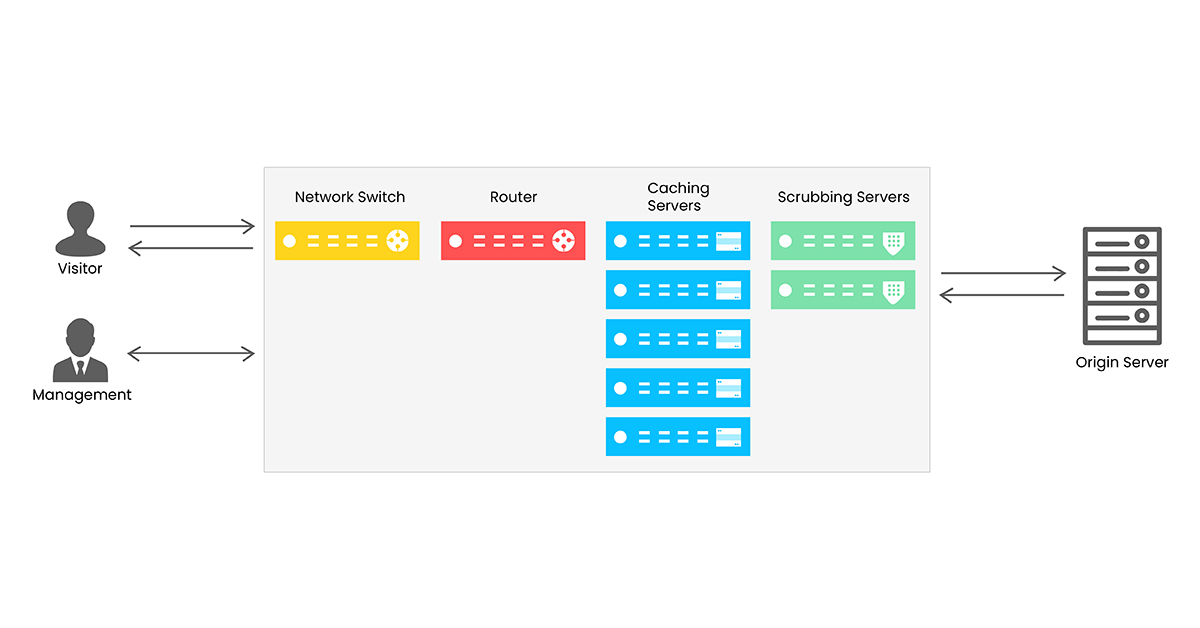
Pillars of a CDN Design
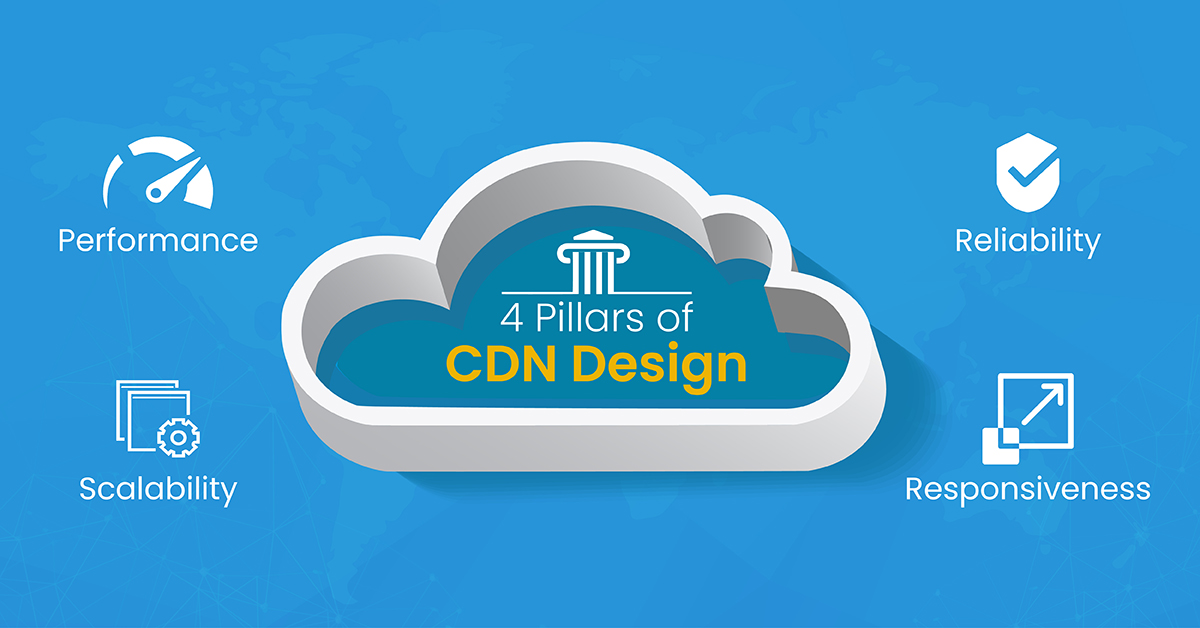
The following are 4 major components or pillars of any CDN design
1. Performance
The underlying function of a CDN is to cut-short any form of latency. In terms of architecture, minimizing latency can be seen as creating optimal connectivity, with PoPs located across major networking hub crossings. Physical facilities of a PoP are also an important consideration that shouldn’t be overlooked.
Usually, PoP resides in the CDN provider’s premium data center, where it has setup agreements with other CDNs and carriers. Such agreements allow CDNs to minimize round-trip times and enhance bandwidth utilization.
2. Scalability
CDNs are designed to handle all sorts of traffic volumes. The CDN architecture must fulfill all the expectations by offering enough networking and processing at all levels. CDNs also do offer DDoS protection services with increased scalability requirements. Secure and scalable requirements in a CDN are addressed by deploying dedicated servers. These dedicated servers can handle network-sized traffic, processing huge volumes of data.
3. Reliability
The underlying functionality for any CDN infrastructure is to create a glitch-free system. CDN can be scaled up to ensure utmost resilience and high-availability with minimal glitches and lags. Higher resilience and system availability allows the CDN providers to offer a committed uptime of nearly 100% within the SLAs.
As a basic rule, the commercial CDNs must follow a ‘no single point of failure’ approach by deploying additional hardware along with redundancy of software. The CDN providers can approach multiple carriers for seamless interaction with servers during disasters or any unforeseen event for offering additional redundancy.
4. Responsiveness
CDNs are constantly looking to enhance their responsiveness. Any CDN’s responsiveness is measured in terms of the time taken for the pan-network configuration change to take place. Even the smallest configuration changes must be mandatorily communicated to all the PoPs. Larger the geographic network spread, the longer it may take to implement the change.
If a CDN provider wishes to ensure good service quality, CDNs must be designed by ensuring prompt configuration using a combination consolidate.
Understanding CDN Topology
Any CDN topology can be classified into the following two major categories
1. Scattered CDNs
The scattered CDNs usually operate on a high number of medium and low-capacity PoPs. In this topology, the main focus lies on delivering optimal physical proximity, and henceforth, the PoPs are situated very close to each other. This form of CDN topology is well-known to offer enhanced speed connectivity in the areas where there is low-connectivity. The smaller PoPs can be easily deployed, allowing faster network coverage growth.
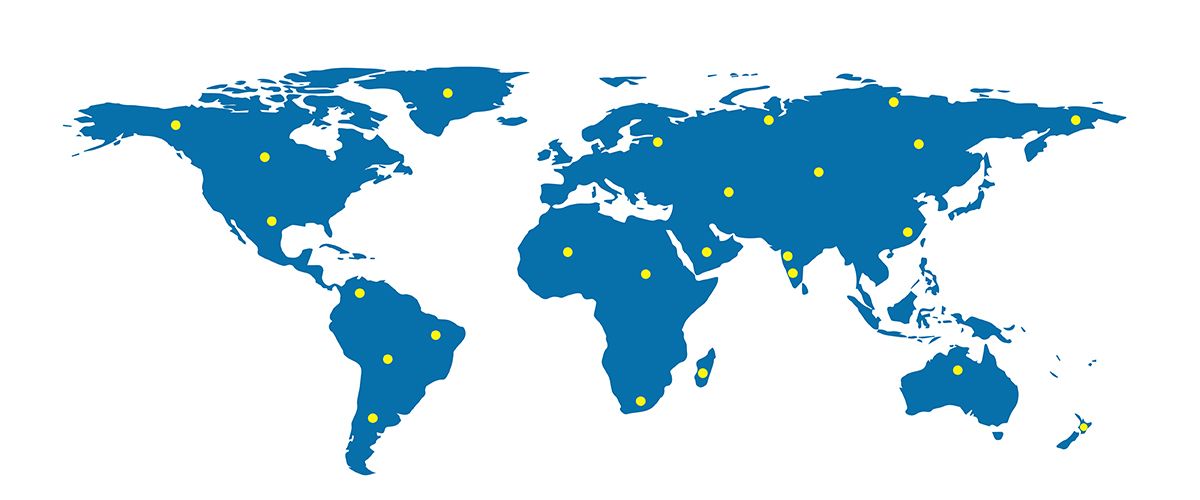
Advantages of Scattered CDNs
- Physical proximity helps in minimizing latency
- Highly effective in regions with low-connectivity
- Smaller PoPs can be easily deployed
Disadvantages of Scattered CDNs
- High maintenance costs
- Higher round-trip time due to several connection points
- Difficult to deploy new configurations and set up
2. Consolidated CDNs
Contrary to the scattered CDNs, the consolidated CDNs operate with fewer high-capacity PoPs that can be strategically placed at major data centers to serve a large population. This CDN topology depicts a relatively advanced approach towards content delivery as it has a centralized infrastructure, allowing agile management and faster deployments. With the consolidated CDNs, end-users and networks both are benefitted as it offers better control and total responsiveness. This CDN topology can be a challenge in areas having low-connectivity.
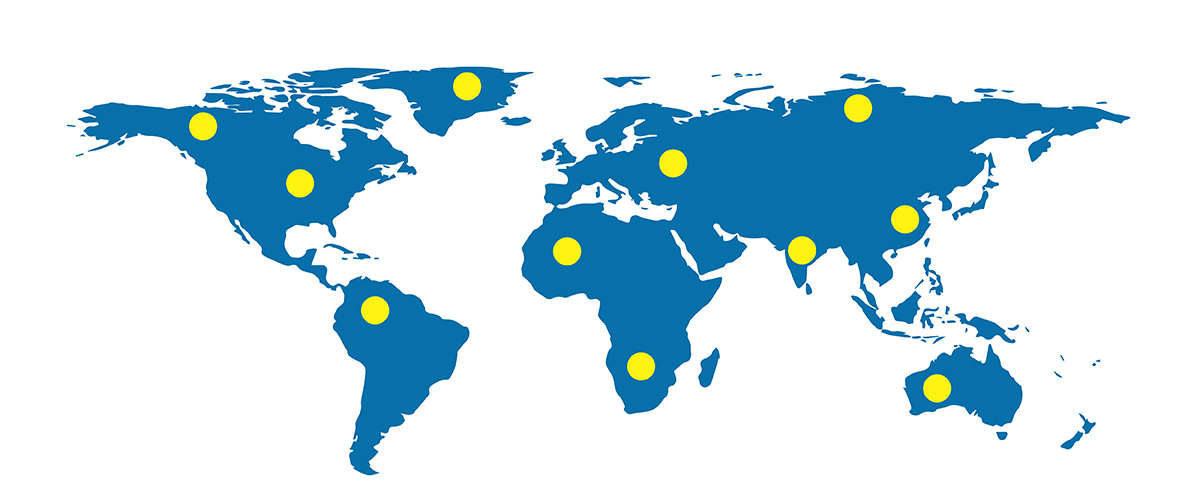
Advantages of Consolidated CDNs
- High-capacity servers advantageous for DDoS mitigation
- Allows agile configuration deployment
- Lower maintenance-related costs
Disadvantages of Scattered CDNs
- It can be less effective with regions having low-connectivity
- High-capacity PoPs are difficult to deploy
Indian CDN Market: An Overview
As per reports published online, the Indian CDN market was valued at $435.2 million in the year 2018 and is expected to be valued at $2846.8 million by 2027. During the forecasted period (2019-2027), the market is expected to witness a growth CAGR of 23.3%.
Growth Drivers of Indian CDN Market
The CDN market in India will witness tremendous growth that is driven by the following 2 major reasons
1. Increased Demand for Online Streaming of Video Content
Today, consumers are making a shift from conventional and cable-based video subscriptions to OTT Internet-based delivery platforms. Numerous players have emerged in the OTT market space, directly resulting in increased Internet traffic. Buffering is seen as a major reason for user dissatisfaction and low experience levels, causing more OTT & VOD-based services.
2. Rapidly Growing Broadband Structure
In recent times, India’s broadband infrastructure has significantly improved, leading to enhanced broadband connectivity and adoption. The rising proliferation of high-speed Internet services and the affordability of associated services will drive media content demand.

Internet Growth Dynamics in India
Source
Concluding Notes
CDN solutions can help all those organizations that wish to deliver content in real-time to their geographically scattered users. With CDN, the data present on the origin, premium data center is replicated across several regional PoPs (Points of Presence). CDN solutions can also be extremely beneficial in minimizing content delivery latency as they virtually reduce the distance between the end-users and the hosted servers. CDN providers like ESDS are now offering cost-effective and secure CDN solutions on a Cloud-based deployment.
If you also wish to leverage ESDS’s Enlight CDN services, visit – Enlight CDN today.
- Considering Data Centers in India to Overcome Economic Conditions - May 10, 2022
- Determining Why Your Organization Needs Web Application Security - February 11, 2022
- How Does a Business Benefit with Managed Services - January 21, 2022



Good Post About CDN